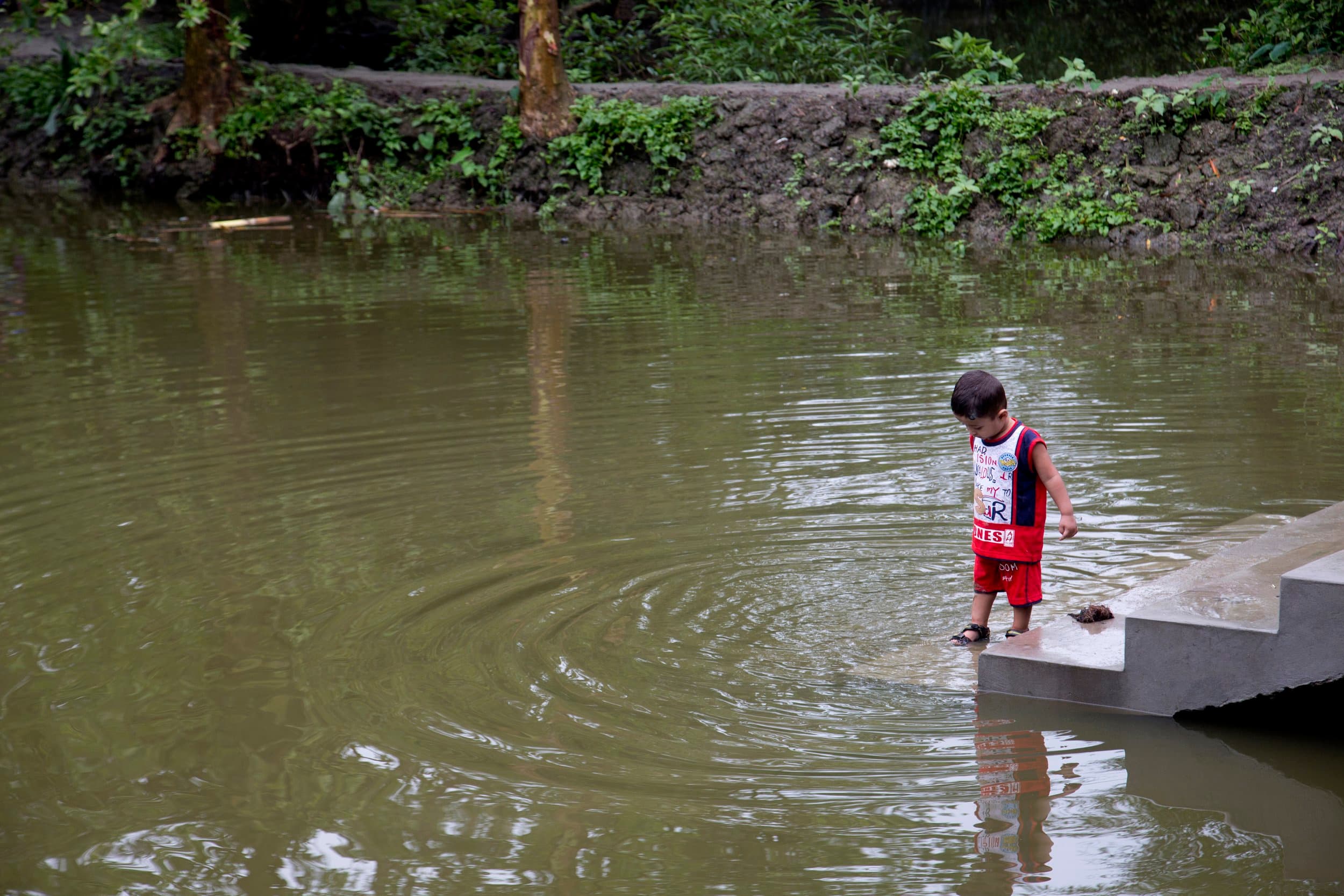Project
Background
The entry point for the ICBC project is the urgent issue of child drowning, which is identified by the 2016 Bangladesh Health and Injury Survey conducted by the Directorate General of Health Services (DGHS) as a leading cause of death among children 1-9 years old. Children under 5 in Bangladesh face the greatest risk of death by drowning with 30 under 5 children dying every day from drowning.

Prevention Strategies
This ICBC project incorporates all three of these prevention strategies. It is built around an adaptive design that was co-created by childcare and protection professionals from across Bangladesh’s government and other non-state drowning prevention and ECCD sectors.
Providing safe, affordable childcare opportunities (for example, a crèche) for children under 5.
Increasing access to swimming instruction for children ages 6-10, with an emphasis on water safety and safe rescue skills.
Raising public and parental awareness of child safety risks and methods for reducing them.

References
A Johns Hopkins University study[1] conducted jointly with a local research agency, Centre for Injury Prevention Research, Bangladesh (CIPRB) revealed that such incidences of drowning are preventable, with reduction rates as high as 88 percent. These findings align with those of the Global Report on Drowning[2], published by the World Health Organization (WHO) in 2014, which calls for the mentioned three essential prevention strategies above.
1. Hyder, A. A., Alonge, O., He, S., Wadhwaniya, S., Rahman, F., Rahman, A., & Arifeen, S. E. (2014). Saving of children’s lives from drowning project in Bangladesh. American Journal of Preventive Medicine, 47(6), 842-845.
2. World Health Organization. (2014). Global report on drowning: Preventing a leading killer. World Health Organization.